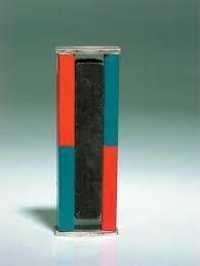Description
Hooke’s law is a principle of physics that states that the force (F) needed to extend or compress a spring by some
distance X is proportional to that distance. That is: F = kX, where k is a constant factor characteristic of the spring:
its stiffness, and X is small compared to the total possible deformation of the spring. The law is named after 17thcentury British physicist Robert Hooke. He first stated the law in 1676 as a Latin anagram. He published the solution
of his anagram in 1678 as: uttensio, sic vis (“as the extension, so the force” or “the extension is proportional to the
force”). Hooke states in the 1678 work that he was aware of the law already in 1660.
Hooke’s equation holds (to some extent) in many other situations where an elastic body is deformed, such as wind
blowing on a tall building, a musician plucking a string of a guitar, and the filling of a party balloon. An elastic body
or material for which this equation can be assumed is said to be linear-elastic or Hookean.








Reviews
There are no reviews yet.